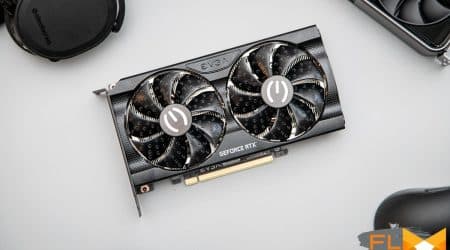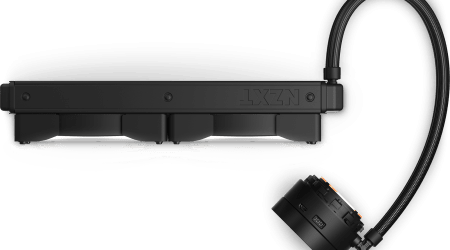In today’s interconnected world, ensuring consistent connectivity is vital for various devices. Many individuals and businesses seek reliable ways to manage their communication systems, offering seamless access to essential resources. Establishing a reliable connection requires a proactive approach to controlling how devices interact within a system.
One effective method involves the allocation of a non-changing numerical identifier to each device within the environment. This unique identifier allows for stable communication, preventing interruptions that can arise with variable assignments. Such an arrangement is particularly beneficial for servers, printers, and other equipment that necessitates consistent availability.
Understanding the process behind this configuration can empower users to enhance their operational efficiency. With a clear plan in place, achieving a dependable connectivity framework can transform the way devices engage and ensure unbroken access to services.
Understanding Static IP Addresses
A consistent identifier in a digital landscape plays a crucial role in ensuring reliable communication between devices. Such identifiers are essential for various applications, ranging from hosting websites to establishing secure remote connections. The concept revolves around permanence, allowing users to maintain a fixed location in the vast digital realm.
Unlike dynamic counterparts, which frequently change, these identifiers provide stability. This characteristic is particularly advantageous for businesses and services that require uninterrupted access and communication. For instance, a server hosting a website benefits from having a constant identifier, enabling visitors to connect seamlessly without disruption.
Moreover, employing a consistent identifier simplifies network management, facilitating tasks like remote access and security configurations. Administrators can easily implement firewall rules and access controls when they know the specific identifier associated with a device. As a result, the reliability and predictability offered by these identifiers are invaluable in various scenarios.
Benefits of Using a Static IP
Employing a fixed numerical identifier for devices within a communication framework presents numerous advantages that can enhance overall functionality and accessibility. This approach often leads to improved stability, security, and user experience in various scenarios.
Enhanced Accessibility
- Consistent Reachability: A permanent designation allows reliable access to devices from any location, eliminating confusion caused by changing identifiers.
- Remote Access: Facilitates seamless connections for remote management and monitoring, essential for servers and critical applications.
Improved Security and Management
- Easier Network Control: Assigning fixed identities helps in better organization and administration, making it simple to track and document configurations.
- Firewall and Security Settings: More straightforward implementation of security measures, as the consistent identifiers can be used to create rules for traffic management.
Overall, utilizing a non-variable numerical identifier can significantly enhance the performance and reliability of digital communication processes.
Assessing Your Network Requirements
Understanding the demands of your system is crucial before configuring any IP mechanism. A thorough evaluation ensures optimal performance and connectivity across all devices involved. This analysis helps to identify both current and future needs, enabling a tailored approach to configuration.
Key Factors to Consider
- Number of Devices: Determine how many devices will be connected, including computers, printers, and smart devices.
- Type of Connection: Assess whether the setup will be primarily wired, wireless, or a combination of both.
- Network Usage: Consider the expected bandwidth requirements based on activities such as streaming, gaming, or large file transfers.
- Security Needs: Evaluate the level of security necessary to protect sensitive information and prevent unauthorized access.
Documenting Existing Infrastructure
- Inventory all connected hardware and software.
- Review current configurations and performance metrics.
- Identify any potential limitations that could affect future expansion.
This foundational assessment will aid in creating a robust configuration plan suited to your specific requirements, enhancing efficiency and reliability in your operations.
Step-by-Step Configuration Process
This section outlines a comprehensive guide to help you achieve a fixed communication endpoint within your local environment. By following a clear procedure, you can ensure stable connections for your devices, enhancing overall performance and accessibility.
Preliminary Checks
Before proceeding, confirm that you have the necessary permissions and access rights to alter the settings of your device. It is crucial to gather essential information, including the current configuration details and the desired parameters.
| Item | Description |
|---|---|
| Current IP | Your device’s current endpoint. |
| Subnet Mask | Defines the network segment. |
| Gateway | Router leading to external connections. |
| DNS Servers | Servers responsible for domain resolution. |
Configuration Procedure
To finalize the modifications, navigate to the settings interface of your device. Select the relevant option to configure network properties, and input the details gathered from the preliminary checks. Save the adjustments and restart the device if necessary to ensure the changes take effect.
Troubleshooting Common Issues
When configuring a fixed connection identifier, users may encounter various challenges. Identifying and resolving these problems is crucial to ensure seamless connectivity and optimal performance. Below are common complications and their potential solutions.
- Connection Failure:
- Verify that the device is correctly connected to the router.
- Check if the configured values correspond with the router’s settings.
- IP Conflicts:
- Ensure that no other device on the system is using the same configured identifier.
- Allocate a unique identifier within the range allowed by the DHCP server.
- Inaccessible Internet:
- Examine if the DNS server settings are accurate.
- Restart the modem and router to refresh the connection.
- Slow Performance:
- Check for network congestion caused by multiple devices.
- Update device drivers or firmware to enhance performance.
Addressing these common issues can help ensure a stable and reliable experience. By following the provided troubleshooting guidelines, users can quickly diagnose and remedy problems as they arise.
Maintaining Your IP Address Setup
Ensuring the stability and reliability of your connection requires ongoing attention to the configuration of your digital identifiers. Regular monitoring and updates can prevent disruptions, which are often caused by changes in the environment or modifications in user requirements. It is essential to establish a routine that includes verification of settings and adjustments as needed.
Regular Checks
Consistent review of the current configuration can help identify any inconsistencies or conflicts. Regularly verify that the defined parameters are still applicable and that any recently added devices are functioning properly within the established framework. Keeping a log of changes and observations may also provide insight into any recurring issues.
Adapting to Changes
As technology evolves, so too may the requirements of your digital setup. Be prepared to adapt to new software updates, hardware upgrades, or security enhancements. Engaging in routine assessments will enable you to respond effectively to these changes, maintaining optimal performance and security. Staying informed about best practices and advancements in technology can further support your efforts in preserving a dependable configuration.
Q&A: How to set up a static ip address
What is the difference between static and dynamic IP addresses?
A dynamic IP address changes every time a device connects to the internet, as assigned by the ISP using Dynamic Host Configuration Protocol (DHCP). In contrast, a static IP address doesn’t change and is manually configured, ensuring the device always has the same IP address. Static IPs are useful for applications like email servers or remote access, whereas dynamic IPs are more common for home networks where IP changes are managed automatically by the router.
How do you set a static IP address on your device?
To set a static IP address on your device, go to the network settings of your operating system, such as Windows or macOS. In the IPv4 section, select “Manual” or “Static” and enter the desired IP address, subnet mask, default gateway, and DNS settings. You’ll also need the MAC address of the device you want to assign the static IP to. This configuration ensures the device always uses the same IP address, rather than changing over time like with a dynamic IP address.
Why might you need a static IP address instead of a dynamic IP address?
You might need a static IP address if you run services like an email server, host websites, or use remote access systems like VPNs, where having an unchanging IP address is essential for consistent connectivity. A static IP is also useful for devices like VoIP phones or security cameras, where it’s important that the IP address doesn’t change. Dynamic IP addresses, assigned by your ISP, can change over time, making static IPs more reliable for these use cases.
How do ISPs provide dynamic IP addresses, and can you switch to a static IP?
ISPs typically provide dynamic IP addresses through DHCP, automatically assigning an available IP to devices when they connect to the internet. If you want to set a static IP address, you may need to request it from your internet service provider, as not all ISPs offer static IPs by default. Configuring a static IP may involve an additional fee or setup through the ISP, but it ensures that your IP address remains the same, which can be important for certain use cases like hosting or remote access.
How can you configure a static IP address for your device on a LAN?
To configure a static IP address for your device on a LAN, access your router’s settings via a web browser by entering the router’s IP address. Navigate to the IP settings, where you can assign a static IP to the device’s MAC address. You will need to set the following IP address, subnet mask, default gateway, and DNS server. This ensures that the device on your network always uses the same IP, which does not change like a dynamic IP.
Why would you use a static IP address instead of a dynamic one for a specific device?
You might use a static IP address instead of a dynamic one for devices that require a unique IP address that never changes, such as a server, a Raspberry Pi, or a device providing remote access services via VPN. Static IPs ensure the device remains reachable at the same address every time, while dynamic IPs may change over time, which could disrupt connections. Assigning static IPs is also useful for network management, especially in LAN environments where stable communication between devices is needed.
What are the benefits of getting a dedicated IP address when using a VPN?
A dedicated IP address when using a VPN provides a unique, unchanging IP that is assigned only to you, improving privacy and security. It also helps avoid issues such as being blocked from websites that often restrict access from shared dynamic IP addresses used by many VPN users. Additionally, a dedicated IP can be useful for accessing specific services that require whitelisting, such as remote access to a work network or online banking, where having a consistent IP is important.
How do you assign a static IP address to a device using its MAC address?
To assign a static IP address to a device using its MAC address, first access your router’s IP settings through a web browser. Navigate to the section where you can assign IP addresses based on the device’s MAC address. Enter the MAC address of the device you want to set, along with the desired static IP address. This ensures that whenever the device connects to your Wi-Fi or LAN, it will always be assigned the same IP address, simplifying network management.




